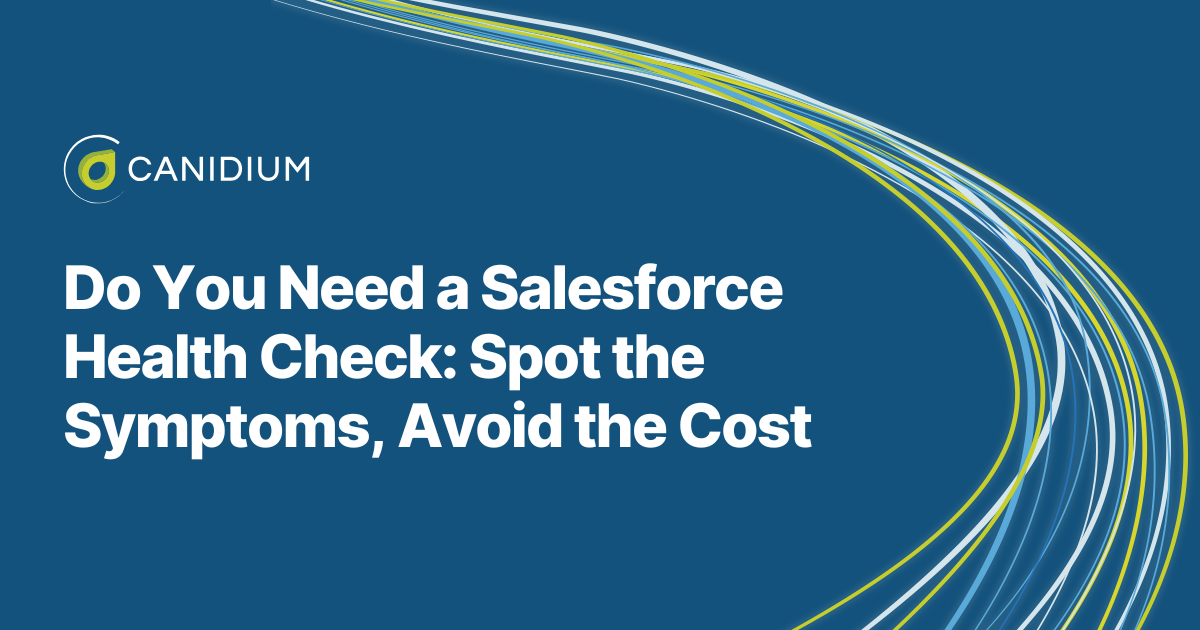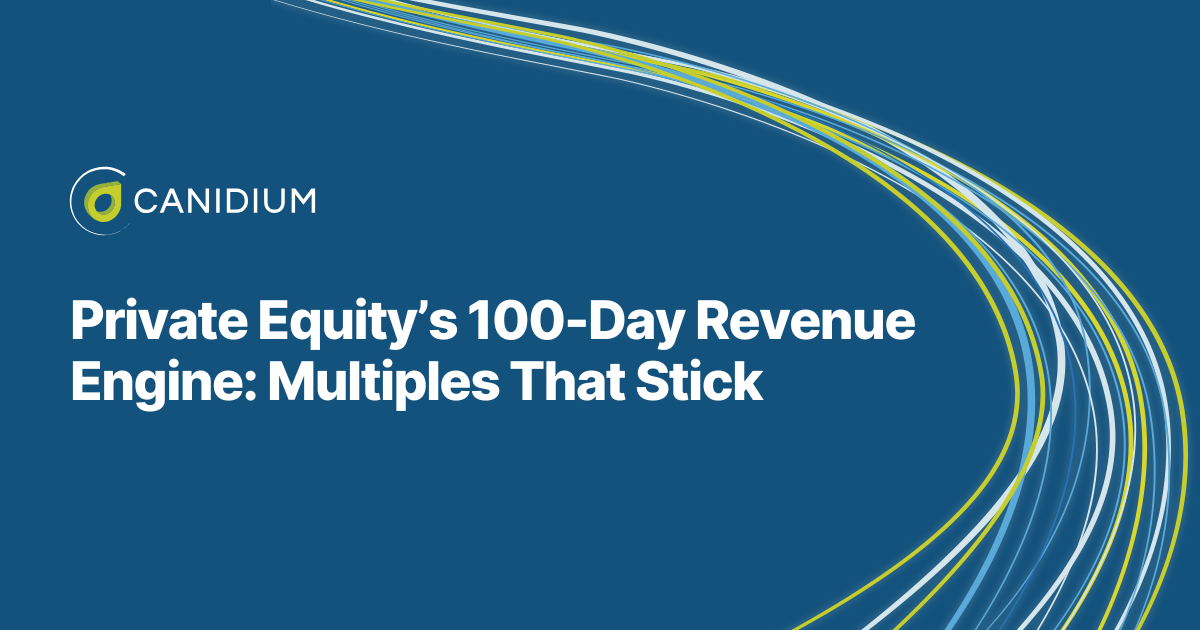Salesforce is a powerful, flexible platform, but over time it can fall victim to the same problems that plague any complex system: poor data, outdated configurations, and overextended admins. A Salesforce Health Check is like a comprehensive physical for your CRM—it diagnoses system inefficiencies, identifies underused features, and prevents long-term damage caused by technical debt.
Here's why it matters, how to know if you need one, and what you have to gain by taking action now.
How to Tell If You Need a Salesforce Org Health Check
Even high-performing organizations can lose visibility into how their Salesforce instance is functioning day-to-day. A health check provides clarity. The following symptoms are common indicators that your org may be operating below its potential:

1. Reporting Gaps
You know something's wrong when your team struggles to generate the detailed reports leadership expects. Often, this happens because:
- The data being pulled is incomplete, confusing, or rife with duplicate records.
- Sales or service teams are entering information inconsistently.
- Reports exist but aren't trusted because the numbers never seem to align, limiting your analytics feature usage.
Imagine, for example, that leadership requests a quarterly forecast, but the sales team spends hours exporting data to spreadsheets and manually correcting inconsistencies. Not only is this inefficient, but it also introduces the risk of error—and erodes trust in the system.
2. System Speed and User Frustration
Does it take too many clicks to do something simple? Do pages load slowly? Is your UI the product of years of patchwork additions and workarounds?
These are signs that the user interface has grown clunky. Reps may have to jump through hoops to update an opportunity or navigate between records. In extreme cases, this leads to reduced productivity, user frustration, and even lost deals.
For instance, picture a sales rep who needs to update a deal's stage, but the process involves navigating through multiple screens and unresponsive page loads. In a rush, they skip the update—causing the pipeline report to be inaccurate.
3. System Errors and Broken Automations
Recurring workflow errors, code failures, misconfigured security settings, or strange error messages aren't just nuisances. They often indicate outdated or misconfigured automations, technical debt, or dependencies that have broken without anyone noticing.
Fixing these with a Salesforce Health Check isn't just about making the red error banner disappear—it's about ensuring system reliability and reducing support overhead.
Imagine an automation meant to assign leads based on geography fails silently. As a result, leads go unassigned and untouched for days, leading to lost business and poor customer experience. This can cause potential vulnerabilities in your sales pipeline, disrupting your business continuity and leading to overall performance issues.
4. Unintuitive Processes and Low User Adoption
If onboarding new reps feels like a multi-week slog, your system probably isn't optimized. When processes aren't intuitive, users make mistakes or simply avoid using Salesforce altogether.
Watch for these warning signs:
- New hires take too long to get productive despite user training.
- Key fields are regularly left blank.
- You see login activity dropping or inconsistent usage across user roles.
Imagine a new customer success rep struggling to find the right workflow to log client interactions. They default to keeping notes in a personal document instead—meaning data is lost, and collaboration suffers through system performance bottlenecks.
5. Platform Updates and Untapped Features
Salesforce releases new features three times a year. But if your team doesn't have time to evaluate what's new, your org might be:
- Missing out on efficiency-boosting tools.
- Operating with outdated workflows.
- Paying for new features (bundled in your license) you don't use.
An org health check helps you catch up on what's available and match your setup to Salesforce's evolving capabilities.
Many orgs continue to rely on a manual task assignment process, unaware that Salesforce's new tools could automate it entirely—freeing up admin time and improving consistency. A simple Salesforce Health Check can unlock new security settings, as well as improve the value of your overall system.
What Happens If You Don't Do a Salesforce Health Check?
Ignoring systemic issues doesn't make them go away—it lets them grow. The consequences of an unchecked Salesforce org range from inefficiency to serious technical debt. Here's what's at stake:
1. Technical Debt Compounds Over Time
Every workaround, shortcut, or ignored update adds weight. The longer you wait, the more time-consuming and expensive cleanup becomes. CIOs estimate that 20–40% of their technology investments are tied up in tech debt—that's a significant chunk of their total technology value. In fact, this problem has grown so severe that the accumulated software technical debt in the US has grown to $1.52 trillion.
This not only slows future projects but also puts your system at risk of breaking under its own complexity. It opens you up to potential security issues, hinders business operations, and causes a compounding decrease in performance that becomes more and more costly with each passing year.
2. AI and Analytics Become Useless with Bad Data
Want to adopt Salesforce AI or visualize your pipeline in Tableau? Before you can leverage new custom dashboards with detailed reports or integrate any new AI custom apps, you will need to perform a Salesforce Health Check.
Poor data hygiene makes it nearly impossible to leverage advanced tools effectively. Consequently, if you haven't performed a Salesforce Health Check in the past year, you are likely paying for innovative tools and security features you simply can't use.
3. Integration Pain
As your tech stack grows, Salesforce needs to communicate with other systems. But bad data structure, outdated configurations, or an array of bugs can make integrations fragile or even impossible, reducing the agility of your business processes as a whole and leading to compounding, deep-rooted technical debt.
4. Admin Bandwidth Is Stretched Too Thin With Manual Efforts
Salesforce admins are often already consumed by major initiatives and don't have the capacity to look backward and identify long-standing vulnerabilities in your business processes within your system. Without a structured review process, systemic issues such as security threats, programming bugs, or incomplete records will go unaddressed and multiply.
Why Turn to Canidium for Your Salesforce Health Check
Partnering with the right team makes all the difference. Canidium's approach is rooted in experience, focus, and clear value. Here's what sets us apart:
A Proven Playbook
If you know something's off in your Salesforce org but aren't sure where to begin, Canidium does. We've built a repeatable, battle-tested process that removes the guesswork. Our structured approach ensures we can quickly diagnose potential issues and implement meaningful improvements. We can configure your Salesforce org to meet your organization's unique business objectives and workflows by building in custom baselines.
Salesforce Expertise
We're not generalists. As a dedicated Salesforce consultancy, we've seen it all. Our deep platform knowledge, hands-on experience, and exposure to a wide range of business models help us connect the dots across orgs—and bring that wisdom to yours.
Fixed Fee Engagements
No surprise invoices. Our org health checks are delivered at a fixed fee, so you can forecast ROI before we begin. Compared to the long-term costs of inefficiencies, missed opportunities, or underutilized features, it's a smart and contained investment.
License Maximization
You're already paying for Salesforce's latest features with your subscription. If you're not using them, you're leaving value on the table. We help identify and activate underused capabilities so every dollar of your license goes further. This means you will be able to leverage the latest AI applications and security settings to achieve optimal performance.
Getting Started With Your Salesforce Health Check
Salesforce is one of the most powerful tools in your business toolkit—but power alone doesn't guarantee results. Without regular evaluation and tuning, even the best systems degrade over time. Dashboards become unreliable, processes drift out of sync with your workflows, and costly features go unused. What starts as a few small inefficiencies can quietly snowball into lost revenue, frustrated teams, and poor decision-making.
A Salesforce Org Health Check is your opportunity to reset. It's a low-risk, high-reward initiative that uncovers where your setup is holding you back—and what you can do to fix it. Whether you're dealing with confusing reports, slow performance, broken automations, or simply wondering if you're getting the most out of your license, this is the place to start.
You've already made the investment in Salesforce. Now it's time to make sure it's delivering.
Let's talk. We'll show you what's possible with the tools you already own—and how to unlock their full value with a health check.







